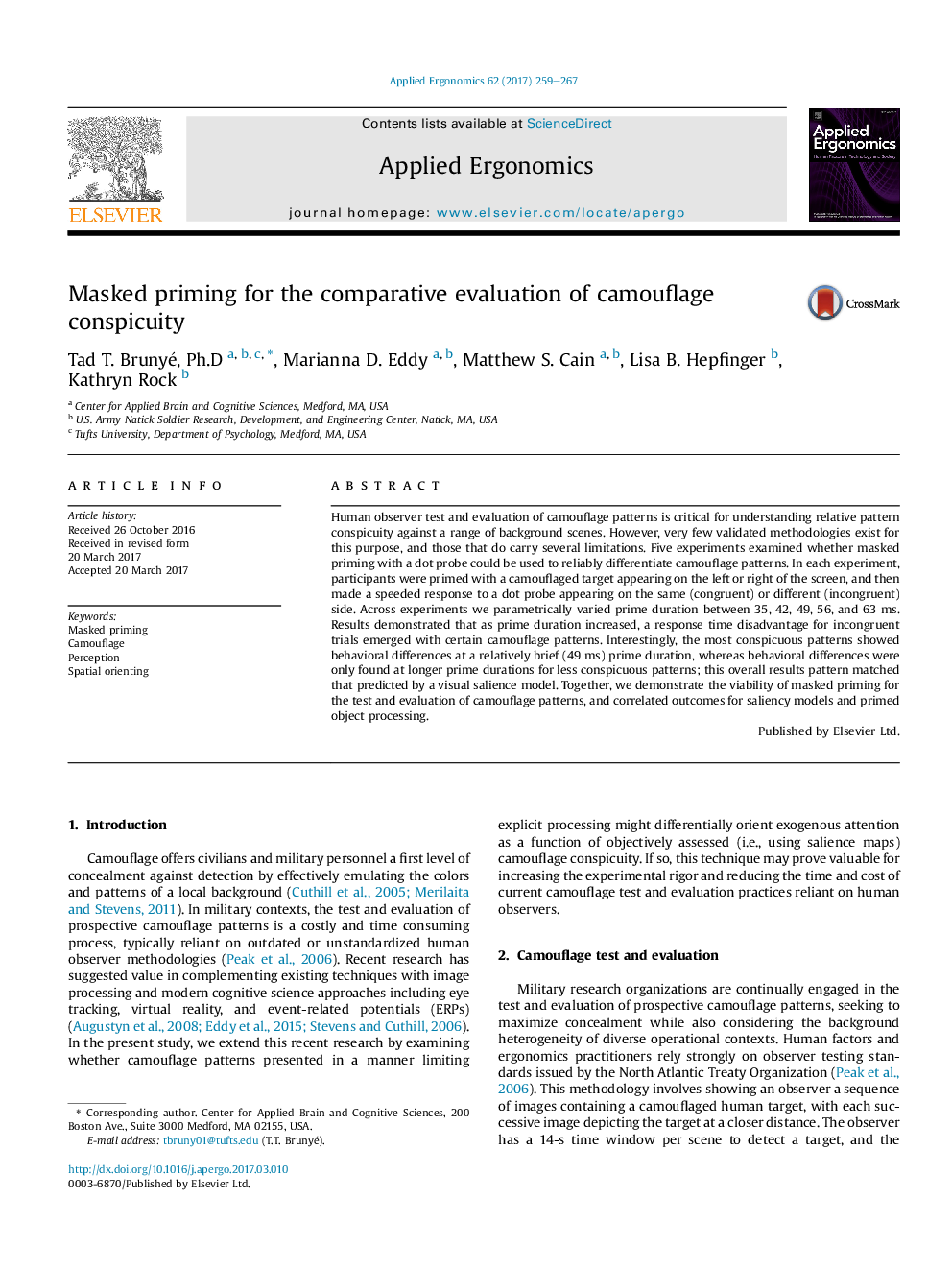| Article ID | Journal | Published Year | Pages | File Type |
|---|---|---|---|---|
| 4972059 | Applied Ergonomics | 2017 | 9 Pages |
Abstract
Human observer test and evaluation of camouflage patterns is critical for understanding relative pattern conspicuity against a range of background scenes. However, very few validated methodologies exist for this purpose, and those that do carry several limitations. Five experiments examined whether masked priming with a dot probe could be used to reliably differentiate camouflage patterns. In each experiment, participants were primed with a camouflaged target appearing on the left or right of the screen, and then made a speeded response to a dot probe appearing on the same (congruent) or different (incongruent) side. Across experiments we parametrically varied prime duration between 35, 42, 49, 56, and 63Â ms. Results demonstrated that as prime duration increased, a response time disadvantage for incongruent trials emerged with certain camouflage patterns. Interestingly, the most conspicuous patterns showed behavioral differences at a relatively brief (49Â ms) prime duration, whereas behavioral differences were only found at longer prime durations for less conspicuous patterns; this overall results pattern matched that predicted by a visual salience model. Together, we demonstrate the viability of masked priming for the test and evaluation of camouflage patterns, and correlated outcomes for saliency models and primed object processing.
Related Topics
Physical Sciences and Engineering
Computer Science
Human-Computer Interaction
Authors
Tad T. Ph.D, Marianna D. Eddy, Matthew S. Cain, Lisa B. Hepfinger, Kathryn Rock,
